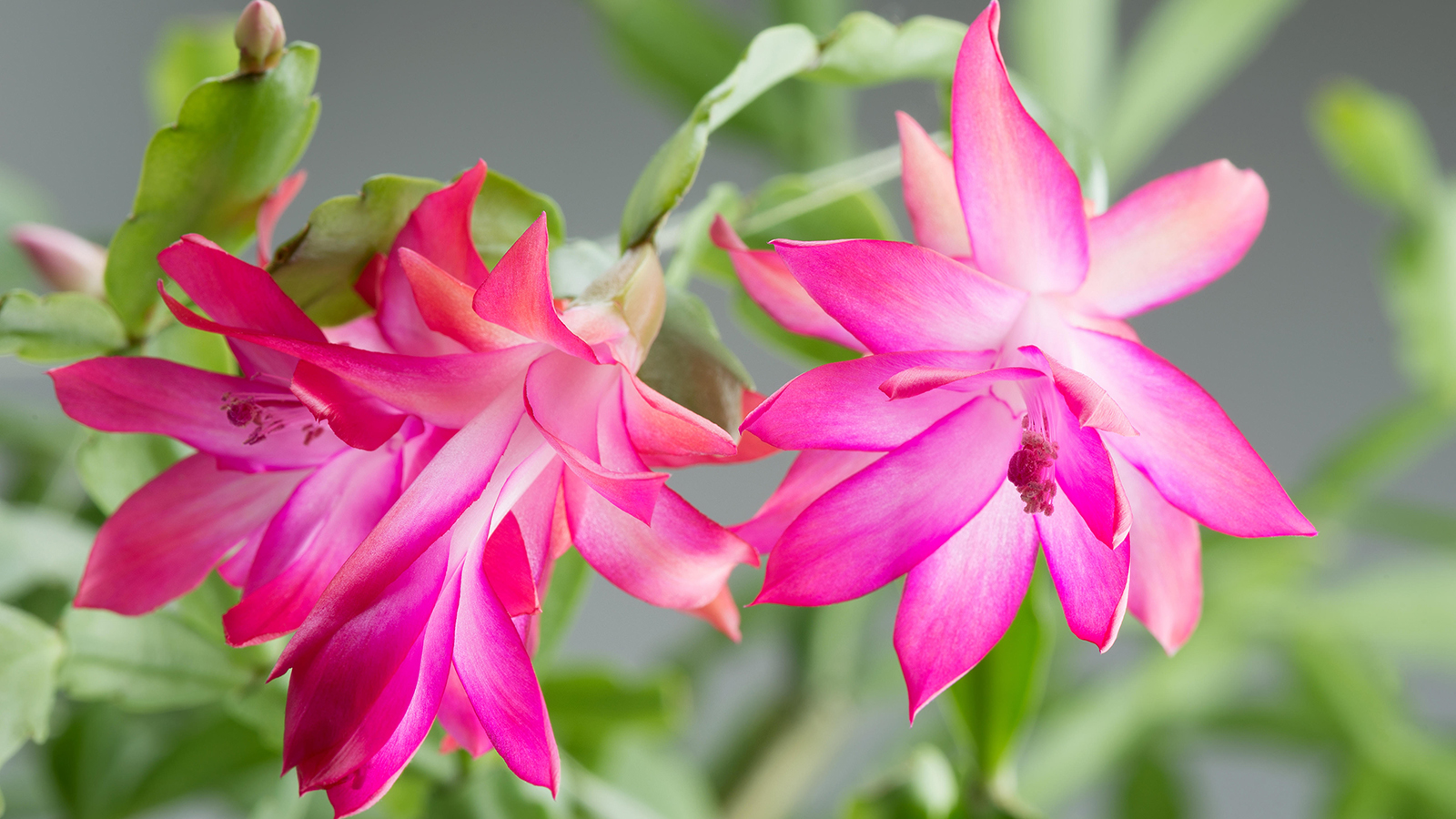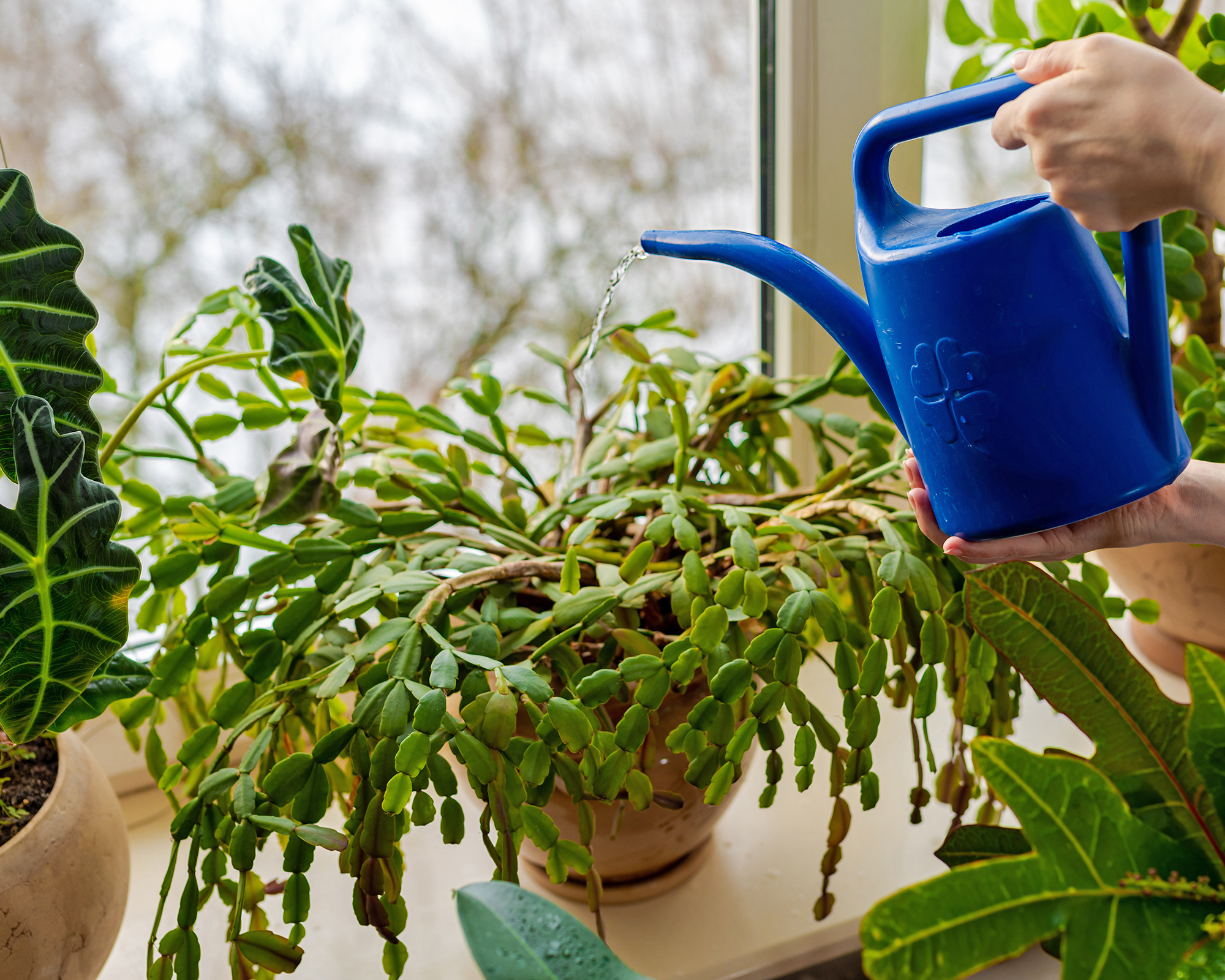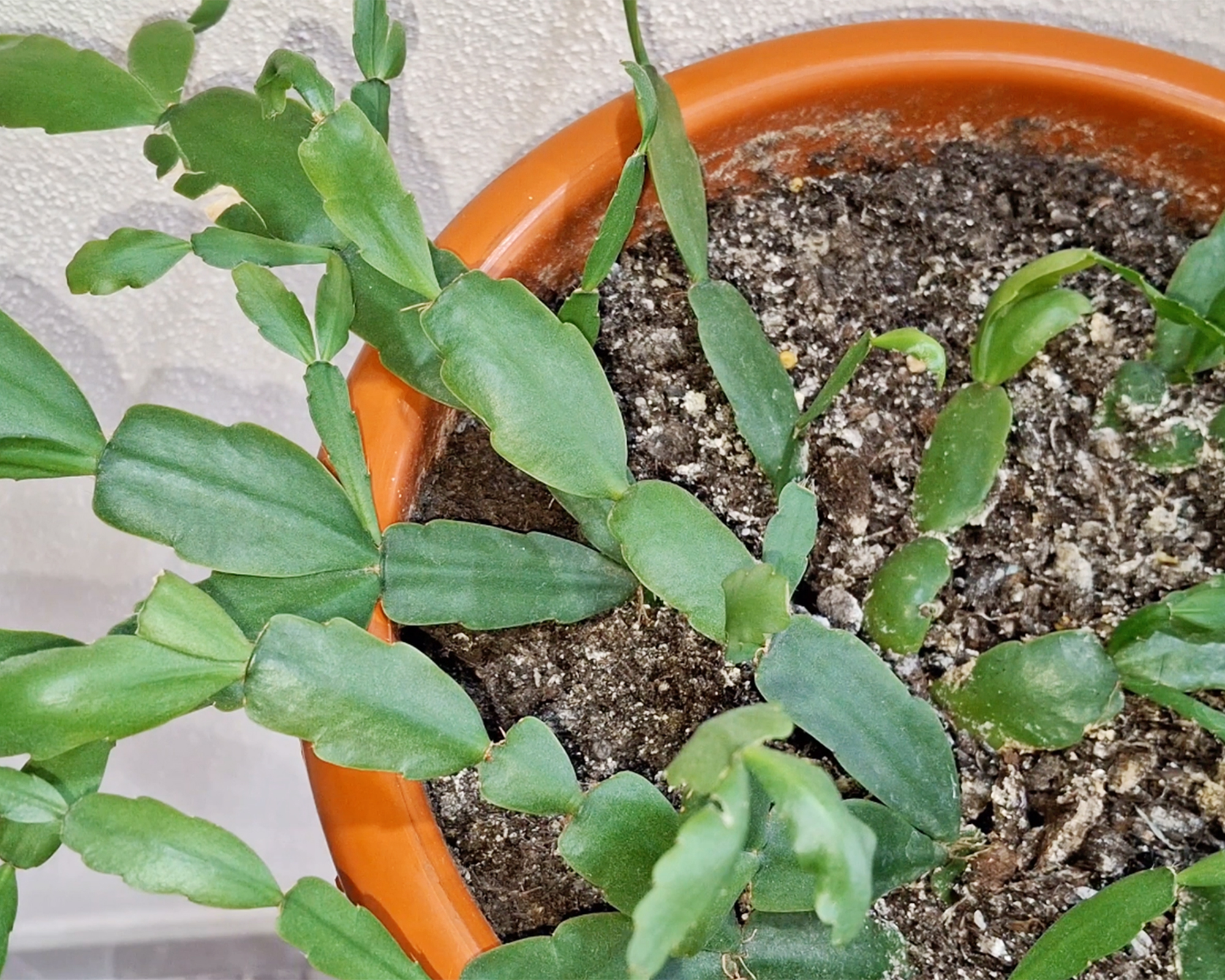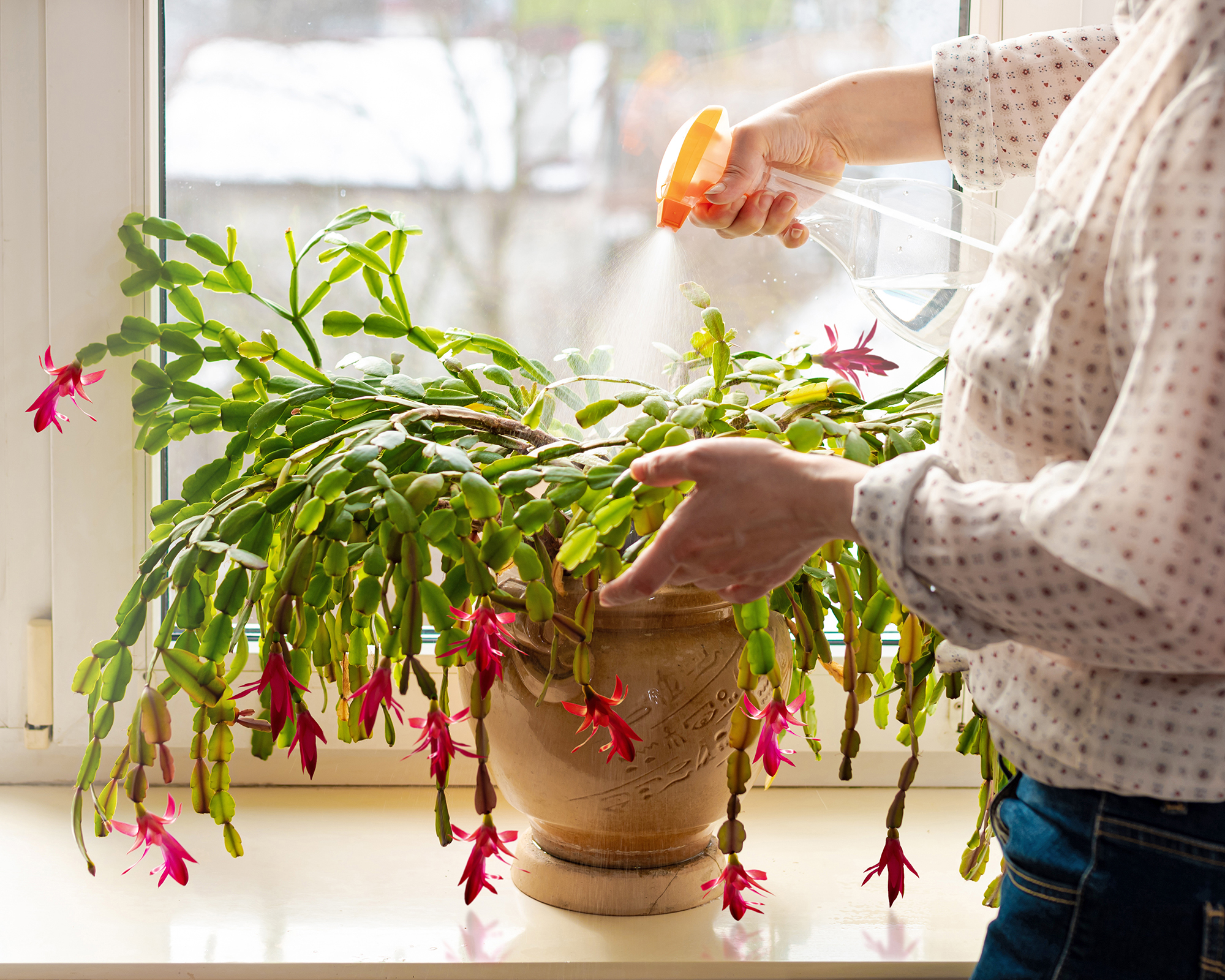Christmas Cactus Fertilizer Guide: How And When To Feed Plants For Better Blooms
Encouraging a Christmas cactus to flower is a lot easier if plants are fertilized properly. Learn the species' feeding needs and enjoy generous holiday blooms.


If you came into possession of a Christmas cactus (Schlumbergera x buckleyi) over the holidays, then it was likely bursting with blooms. But getting it to flower the next year can be tricky. As with most plants, fertilizing a Christmas cactus can make the difference between a stunning display of blooms or a lackluster show.
The perfect Christmas cactus fertilizer may be made or purchased and needs to be applied regularly throughout the growing period to fuel bud production.
An important aspect of Christmas cactus care is to suspend fertilizing at just the right time to ensure it flowers over the holidays. This coincides with shorter days and cooler nighttime temperatures, which are key drivers of bud formation. You should see buds start to appear around October to early November.
As well as Christmas cacti, there are a couple of other types of holiday cactus that tend to come into flower during certain holidays. Thanksgiving cactus care and Easter cactus care are broadly the same, so you can use this advice for those varieties too.
Best Fertilizer for Christmas Cactus
Fertilize Christmas cactus plants with a water-soluble, balanced bloom formula houseplant fertilizer, such as 20-20-20 (nitrogen, phosphorus, and potassium) or 20-10-20. Some growers suggest using African violet food.
Follow the fertilizer instructions for the amount to mix with water, but cut that in half. Full-strength fertilizer could burn Christmas cactus roots.
In addition to using a balanced fertilizer, Christmas cacti benefit from a monthly application of Epsom salts dissolved in water, due to the plants' high magnesium requirements.
Sign up for the Gardening Know How newsletter today and receive a free copy of our e-book "How to Grow Delicious Tomatoes".

When to Fertilize Christmas Cactus
Use a balanced fertilizer once per month in the spring and summer. Dilute the formula to half-strength and begin feeding at the start of spring until the end of August.
In the same period, supplement Christmas cactus food with Epsom salts once per month. However, do not apply in the same week as fertilizing. Dilute one teaspoon (5ml) of Epsom salts in one gallon of water.
In the fall, either stop fertilizing or switch to a low-nitrogen fertilizer, such as 0-15-0. The phosphorus will drive bud formation while limiting vegetative growth that could draw energy from flower production.
Once the plant has finished blooming, do not feed again until early spring. There is no need to fertilize in winter, as the plant is not actively growing.
How to Feed Them
Once per month, at the regular watering period, deliver the liquid fertilizer to the soil at half strength. Mix the fertilizer and water well and tip out any excess that leaches through the soil into the saucer. This will prevent the roots from sitting in too much moisture
Occasionally soaking the plant with water and letting excess salts flow out the drainage holes is necessary as excess salts can burn the roots. To do this, set the plant in the shower and drench the soil. Allow the pot to drain freely and the planting medium to dry out before watering anew.

Care Tips to Support Fertilizing
Regular feeding will keep a Christmas cactus healthy and promote bud development. But fertilizing alone does not guarantee flowers. Making a Christmas cactus bloom requires certain seasonal cues that mimic the plant's natural environment. They are tropical epiphyte plants native to Brazil, growing in the crevices of trees and thriving in warmth and humidity.
As well as looking out for common Christmas cactus problems, you need to support fertilizing by recreating the plant's native growing conditions as closely as possible.
- Light
Christmas cacti set buds in fall during cooler days with shorter daylight hours. They need 12-14 hours of darkness to trick the plant into pushing out buds. In October, put the plant in a room that is not lit in the evening, or cover it with a box overnight. The rest of the time, plants benefit from bright indirect light. - Temperature
Daytime Christmas cactus temperatures of 70-80°F (21-27°C) are ideal during the spring and summer, with nighttime temperatures of 60-70°F (15-21°C). But the plant needs cooler temperatures in the fall and winter to encourage blooms. Ideal daytime temperatures this time of year are 60-68°F (15-20°C), with nighttime temperatures of 50-60°F (10-15°C). - Watering
Unlike desert cacti, holiday cacti live in tropical forests where they receive regular rainfall. These plants need to be kept moist but not soggy. Christmas cactus watering requirements are reduced in the fall when the plant is getting ready to bloom. Only water when the soil starts to dry out. Prevent the bottom of the pot from standing in water or root rot may occur, which is one of the most common Christmas cactus diseases.

- Humidity
The Christmas cactus thrives with humidity of 50-60%. You can increase humidity for houseplants by placing the pot on a tray of pebbles filled with water. - Repotting
Eventually, the soil will release all it has to offer and the cactus will slowly starve. While the plants prefer a crowded environment, repotting a Christmas cactus is necessary every few years. A mixture of half potting soil and half sand or perlite is adequate. - Soil
To support fertilizing, Christmas cactus soil needs to be well-draining and slightly acidic. This enables the plant to uptake the nutrients delivered in the fertilizer. A potting mix pH of 5.5-6.5 is ideal. - Pruning
Prune Christmas cactus stem ends after blooming to encourage branching. You can propagate Christmas cactus by rooting these cuttings after allowing the edge to callus in a sand/soil mixture or pure vermiculite. - Outdoors
You can move a Christmas cactus outside in summer if you wish, but avoid harsh sunlight which can burn the stems. - Pests
Watch for common Christmas cactus pests including mealybugs or scale insects and combat them with a good insecticidal soap spray.
If you can provide these conditions to support fertilizing, then you will find the Christmas cactus to be one of the easiest, high-reward houseplants to grow, with year-end gifts to rival those holiday presents.

Bonnie Grant is a professional landscaper with a Certification in Urban Gardening. She has been gardening and writing for 15 years. A former professional chef, she has a passion for edible landscaping.
- Melanie GriffithsEditor in Chief
- Amy DraissDigital Community Manager
